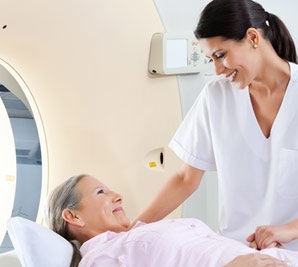
Think about this: An estimated nine million high-risk Americans are eligible for lung cancer screening via a low-dose CT scan. The U.S. Preventive Services Task Force says early screening would save the lives of 20 percent of those people. That’s 1.8 million people!
Now think about this: According to the American Lung Association, 84 percent of Americans considered at high risk for lung cancer are unaware that lung cancer screening is even available. And only 15 percent know that lung cancer screening is covered for those at high risk by Medicare and most healthcare plans.
As part of Lung Cancer Awareness Month in November, Derry Imaging is working to change that with its Low-Dose Lung Screening Program. Many people at high risk do not consider being screened because they don’t understand the process.
Derry Imaging is hosting one of 200 “Shine a Light on Lung Cancer” events on November 20th to celebrate survivors, caregivers and all those who have been impacted by the disease. As part of that celebration, Derry Imaging’s Lung Screening Navigator, Blain Allatt, talks here about the positive effect of early screening.
A lifeline
Lung cancer has the highest mortality rate of all cancers in the world for both men and women. Of all the risk factors associated with lung cancer, smoking tobacco is the single most important risk factor. Lung cancers caused by smoking can in fact be prevented with two strategies. The first steps for prevention are encouraging current smokers to quit and to discourage non-smokers from ever beginning. The second step for lung cancer prevention is lung cancer screening with annual Low Dose CT (LDCT) Scans.
Lung cancer screening is quick, painless and often covered by insurance. For people at high risk of lung cancer due to age and a history of smoking, screening provides peace of mind and, in some cases, can serve as a lifeline.
Early detection is critically important in successfully treating lung cancer. It can reduce the death rate by up to 20 percent by detecting tumors at early stages when they are more likely curable. Unfortunately, by the time symptoms appear, the disease is already at an advanced stage. And in many cases, people mistake symptoms for other things, such as an infection, further delaying diagnosis.
It has also been shown that low-dose CT scans are more effective than chest X-rays for early diagnosis of lung cancer. For higher-risk people, yearly scans before symptoms start are recommended.
Who is eligible?
“High-risk” is defined by the ALA as a person between ages 55 and 80, with a 30-pack year history of smoking and who is a current smoker or a former smoker who has quit in the past 15 years. Even if you lack symptoms or a history of the disease, it’s important for high-risk individuals to be screened.
Proven results
Currently, fewer than 20 percent of lung cancer cases in the state are caught early, when the survival rate is significantly higher. But the percentage of people in the state who live five years after diagnosis is 23.1 percent, higher than the national rate of 20 percent. The rate of new lung cancer diagnoses in New Hampshire is 68.1 percent, compared to the national rate of 63 percent.
An easy process that usually ends with peace of mind
Lung cancer screening need not be frightening. During the scan, patients lie on a table and a CT scanner uses a low dose of radiation to make detailed images of their lungs. The scan only takes a few minutes and is not painful.
Board-certified Radiologists interpret LDCTs, and while analyzing the images of the scan, they are primarily looking for lung nodules, which are abnormal dense areas in the lungs. All lung cancers initially appear in this way, but not all are cancerous. Lung nodules are very common and about 50% of individuals over the age of 50 have them. Various factors such as past infections and/or conditions such as Rheumatoid Arthritis and Sarcoidosis, which causes scarring in the lung tissue, can cause nodules. Therefore, it is important for LDCTs for lung cancer screening to be repeated annually to detect any changes to existing lung nodules, or growth of new nodules.
It is rare for a lung cancer diagnosis to be made, but those who are diagnosed have the benefit of knowing sooner rather than later, when treatment has higher success rates.

